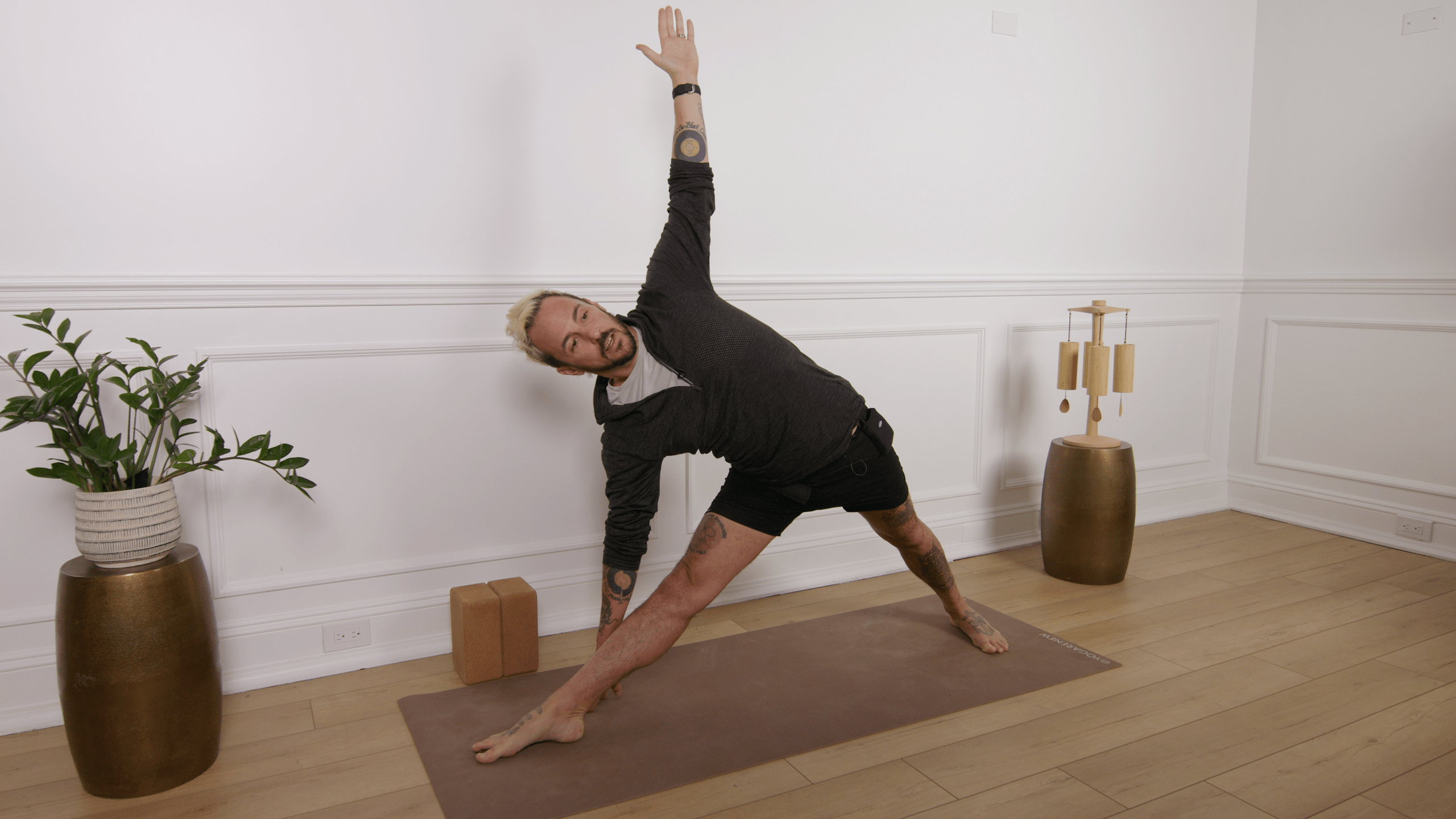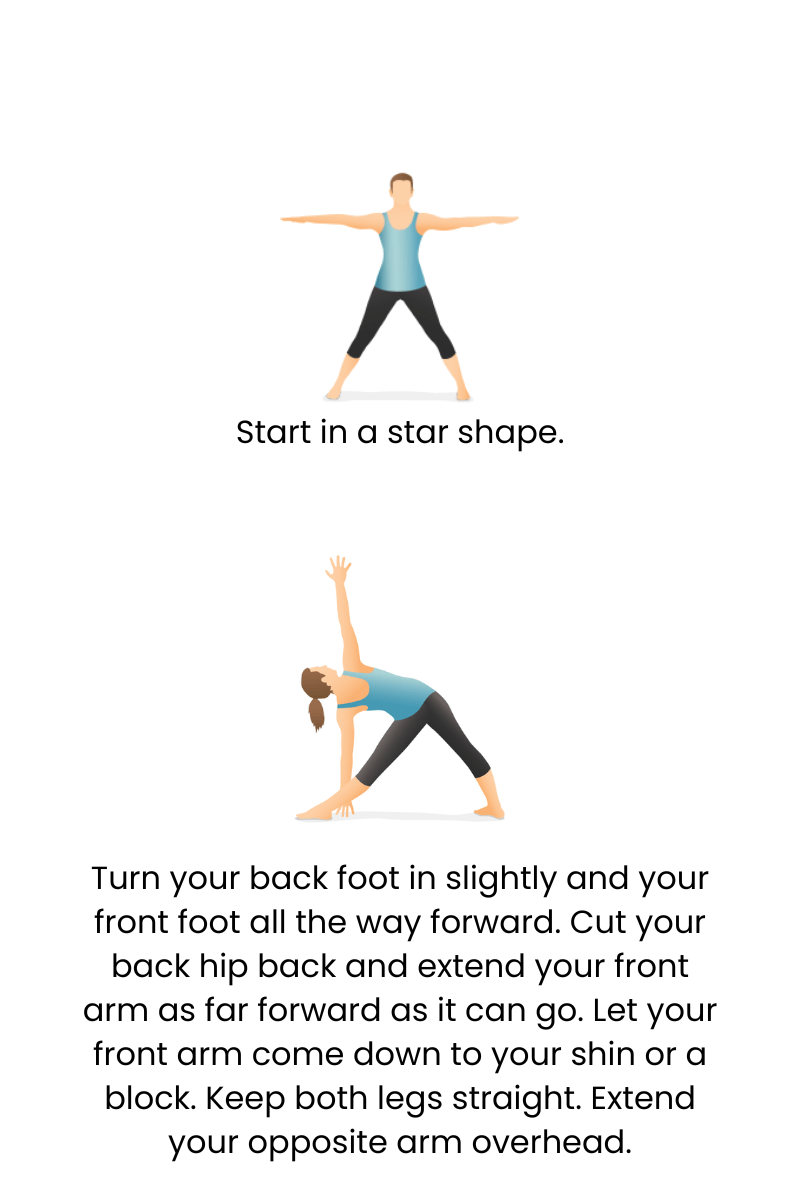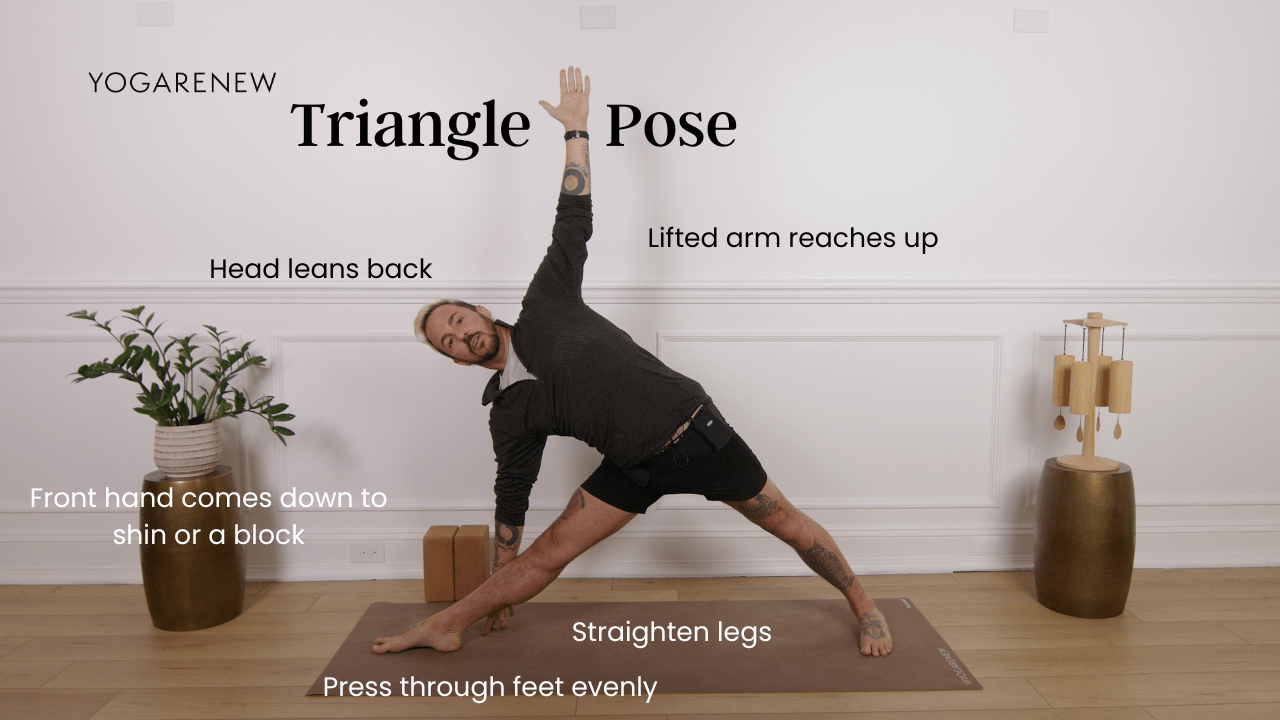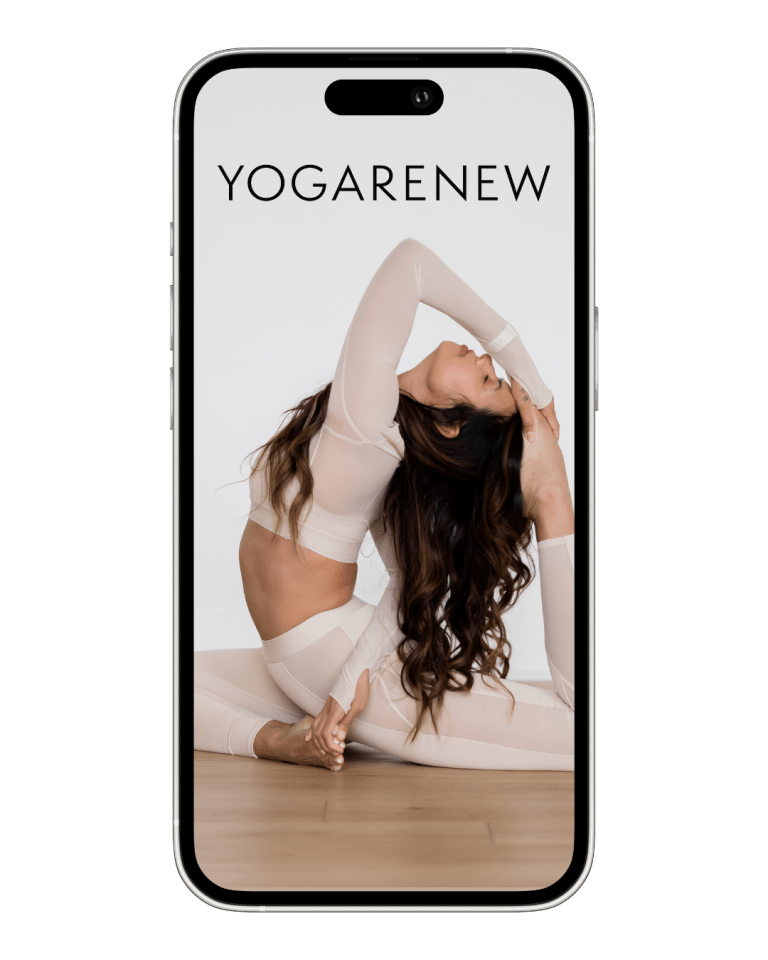What is Triangle Pose?
English Name: Triangle Pose
Sanskrit Name: Trikonasana (pronounced tree-koh-NAH-suh-nuh)
Category: Standing, Lateral Stretch, Foundational, Beginner

English Name: Triangle Pose
Sanskrit Name: Trikonasana (pronounced tree-koh-NAH-suh-nuh)
Category: Standing, Lateral Stretch, Foundational, Beginner
Triangle Pose, or Trikonasana, is a classic standing yoga posture that blends strength, balance, and spaciousness. With legs extended wide and the body stretching over one leg, the pose creates a triangle shape with the limbs and floor.
It’s a staple in many yoga styles, used to cultivate body awareness, enhance alignment, and build flexibility in the legs, hips, and spine—while engaging the core and expanding the chest.
Stretches the Hamstrings, Hips & Side Body: Elongates the entire lateral chain
Builds Stability in the Legs & Core: Requires muscular engagement for balance
Improves Spinal Alignment: Encourages length and symmetry through the torso
Opens the Chest & Shoulders: Supports better posture and lung expansion
Enhances Body Awareness: Teaches active alignment and mindful movement
Grounds & Energizes: Balances effort and ease through steady structure
Start in Mountain Pose (Tadasana), then step your feet wide apart—about 3–4 feet.
Turn your right foot out 90 degrees and angle your left foot slightly in.
Align the heel of the front foot with the arch of the back foot.
Inhale, extend your arms parallel to the floor.
Exhale, reach your right hand forward, then tilt and lower it toward your shin, ankle, or the floor (or a block).
Extend your left arm straight up, stacking shoulders vertically.
Keep your chest open, gaze up or forward, and engage your thighs.
Breathe deeply, hold for 5–10 breaths, then return to standing and repeat on the other side.


Press firmly into both feet, especially the outer edge of the back foot
Keep both legs straight but avoid locking the knees
Engage your thighs and lift the kneecaps
Lengthen both sides of the torso equally—avoid collapsing into the front side
Stack your shoulders and open your chest toward the ceiling
“Imagine you’re between two panes of glass—long and flat.”
“Reach forward before you tilt—create space first.”
“Anchor down through your feet to lift through your torso.”
“Engage your core to support the spine.”
“Let your top arm reach toward the sky like a beam of light.”
Neck Sensitivity: Keep gaze forward or down instead of up
Low Back Issues: Use a block or reduce the depth of the tilt
Hamstring Strain: Micro-bend the front knee and avoid over-stretching
Balance Challenges: Practice near a wall for extra support
High Blood Pressure: Gaze down instead of up to avoid pressure
Use a Block: Place under the bottom hand to avoid overreaching
Shorten Your Stance: Makes the pose more stable and accessible
Rest Hand on Shin: Instead of reaching for the floor
Back Heel Against Wall: Helps with balance and alignment
Chair Support: Perform a modified version with support for therapeutic use
Bound Triangle Pose: Wrap the top arm behind the back to deepen shoulder opening
Revolved Triangle Pose (Parivrtta Trikonasana): Adds a spinal twist
Extended Triangle: Reach both arms overhead alongside ears for more core engagement
Floating Arm Variation: Hover the bottom hand off the leg to build strength and balance
Dynamic Triangle: Flow in and out with breath to explore range and mobility
Collapsing into the Front Side: Keep the torso lifted and extended
Overreaching the Hand: Use a block or raise the hand to maintain alignment
Letting the Chest Drop Forward: Keep the chest open and lifted
Locked Knees: Engage thighs but keep a micro-bend if needed
Over-rotating the Neck: Keep the gaze neutral if there’s discomfort
Acute Hamstring or Groin Injury: Avoid deep stretches or use modifications
Vertigo or Balance Issues: Practice with a wall or keep hand higher
Pregnancy (Second Trimester Onward): Modify the stance and depth of the fold
Chronic Back Pain: Use props and maintain spinal neutrality
Stiff Shoulders or Chest: Keep the upper arm on the hip or lower the gaze
Trikonasana offers the perfect blend of structure and spaciousness. Its open, grounded stance invites physical expansion while building strength and mental clarity. This pose helps awaken the full body—from the feet pressing into the earth to the fingers reaching skyward.
Whether you’re developing foundational alignment or deepening an advanced practice, Triangle Pose is a blueprint for standing strength, breath, and balance.
About 3–4 feet apart, depending on your height and flexibility. Adjust for comfort and stability.
On your shin, a block, or the floor—wherever keeps your spine long and chest open.
Ideally straight, but a soft bend in the front knee is fine if needed for comfort.
Yes! It’s beginner-friendly and easy to modify.
Look down or keep the gaze forward—avoid looking up if it feels tense.

Explore classes & pose tutorials for any style, format, duration or experience level with a free account in the YogaRenew app. Or subscribe and gain access to workshops, live classes and more.